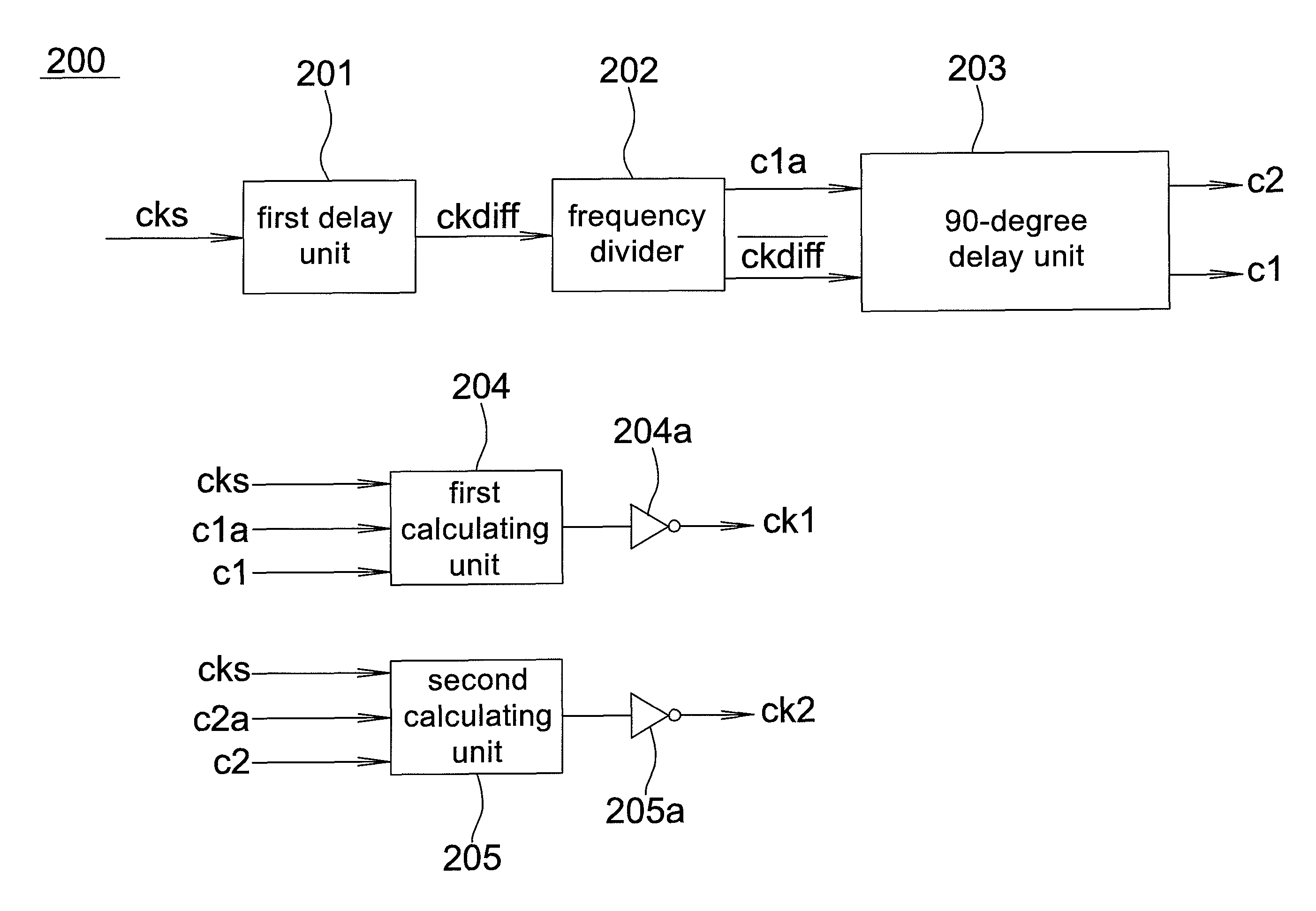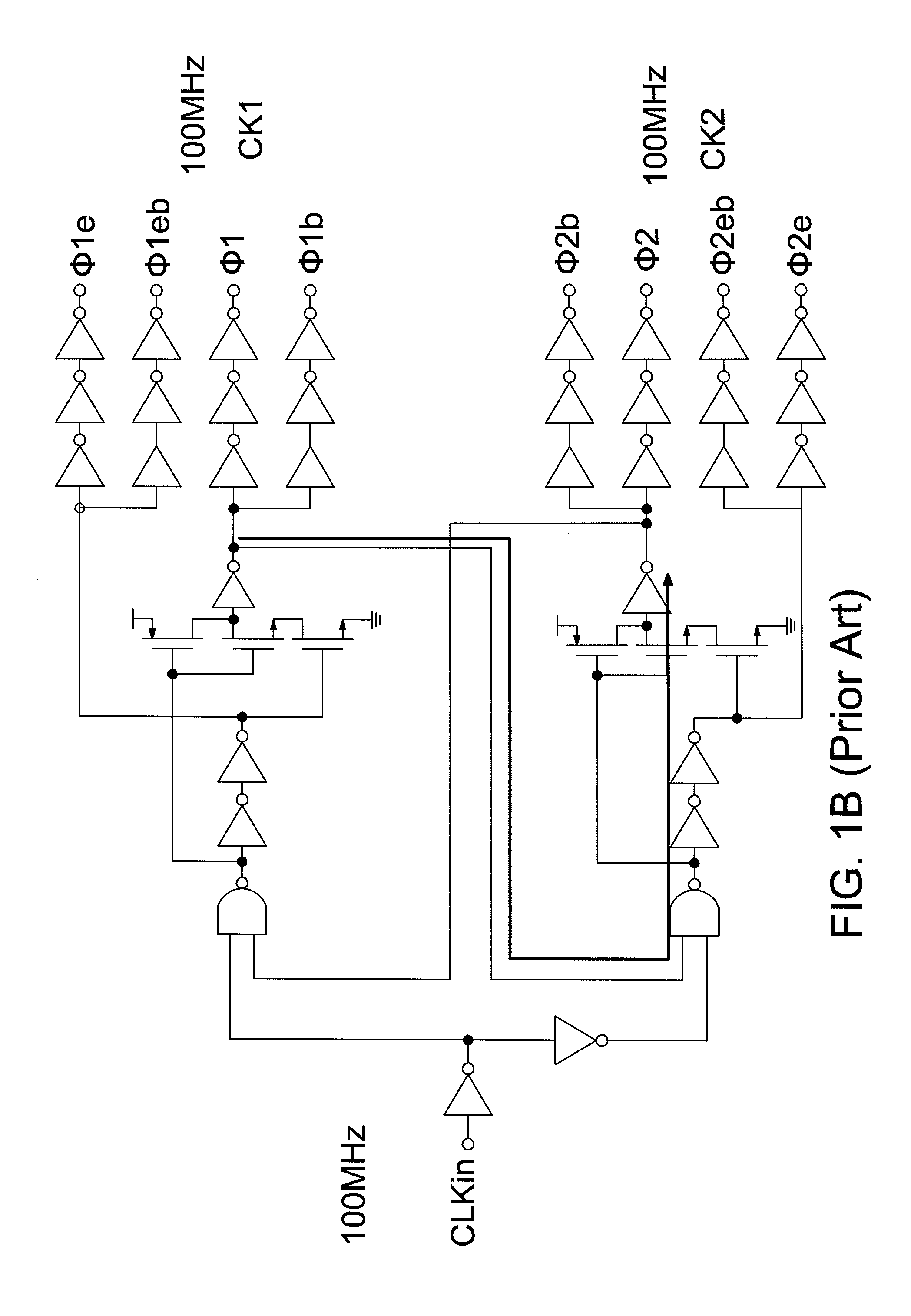Clock generator and method thereof
a clock generator and clock technology, applied in the field of electronic devices, can solve the problems of sampling timing mismatch between the n analog-to-digital converters, non-ideal problems of time-interleaved analog-to-digital converters, timing skew, etc., and achieve the effect of reducing the mismatch problem
- Summary
- Abstract
- Description
- Claims
- Application Information
AI Technical Summary
Benefits of technology
Problems solved by technology
Method used
Image
Examples
Embodiment Construction
[0025]FIG. 2A shows a schematic diagram illustrating a clock generation device in an embodiment of the invention. The clock generation device 200 is a divide-by-N clock generator having low sampling timing skew. The clock generation device 200 comprises a first delay unit 201, a frequency divider 202, a 90-degree delay unit 203, a first calculating unit 204, and a second calculating unit 205.
[0026]The first delay unit 201 receives an input clock cks and delays the input clock cks by a preset period dl to generate an input delay clock ckdiff.
[0027]The frequency divider 202 receives the input delay clock ckdiff, outputs an inverted input delay clock ckdiff and divides the frequency of the input delay clock ckdiff to generate a first frequency-divided clock c1a and a second frequency-divided clock c2a (not shown in the figure). The frequency of each of the first frequency-divided clock c1a and the second frequency-divided clock c2a is a preset multiple (1 / N where N is a nature number l...
PUM
 Login to View More
Login to View More Abstract
Description
Claims
Application Information
 Login to View More
Login to View More - R&D
- Intellectual Property
- Life Sciences
- Materials
- Tech Scout
- Unparalleled Data Quality
- Higher Quality Content
- 60% Fewer Hallucinations
Browse by: Latest US Patents, China's latest patents, Technical Efficacy Thesaurus, Application Domain, Technology Topic, Popular Technical Reports.
© 2025 PatSnap. All rights reserved.Legal|Privacy policy|Modern Slavery Act Transparency Statement|Sitemap|About US| Contact US: help@patsnap.com



